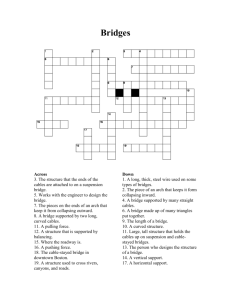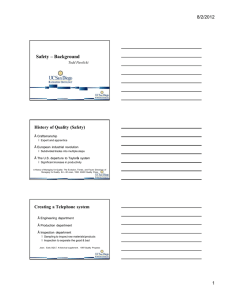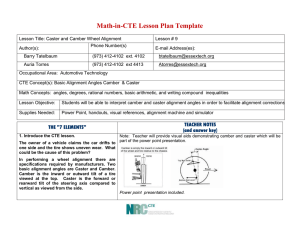The following four tests can be used to assist in troubleshooting load
advertisement
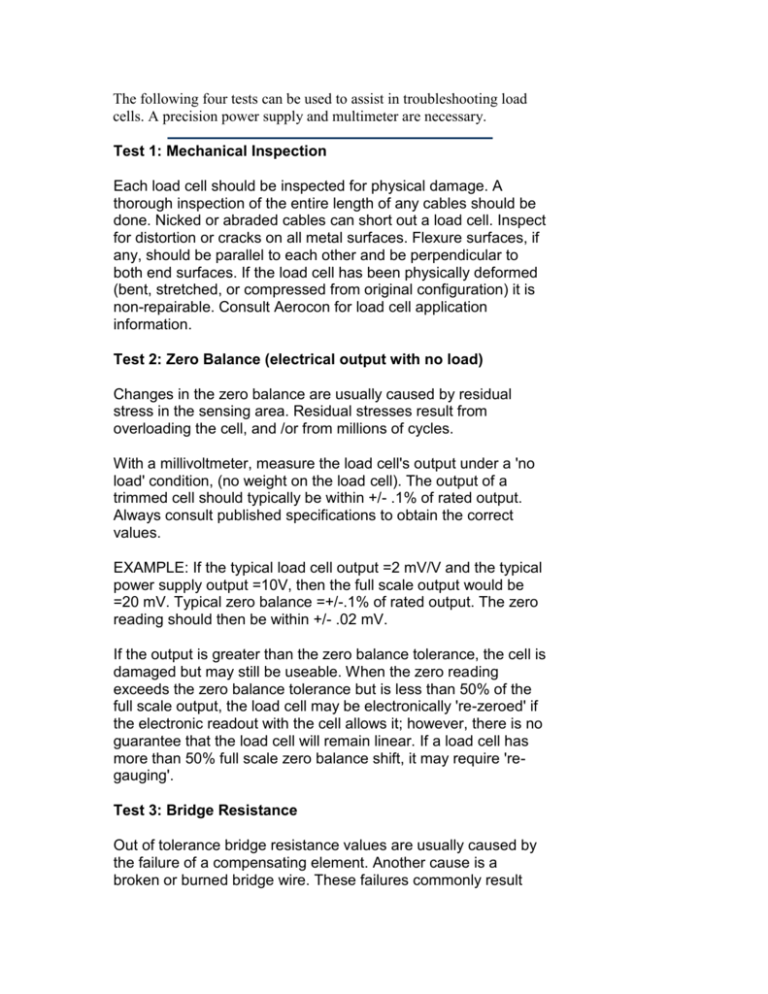
The following four tests can be used to assist in troubleshooting load cells. A precision power supply and multimeter are necessary. Test 1: Mechanical Inspection Each load cell should be inspected for physical damage. A thorough inspection of the entire length of any cables should be done. Nicked or abraded cables can short out a load cell. Inspect for distortion or cracks on all metal surfaces. Flexure surfaces, if any, should be parallel to each other and be perpendicular to both end surfaces. If the load cell has been physically deformed (bent, stretched, or compressed from original configuration) it is non-repairable. Consult Aerocon for load cell application information. Test 2: Zero Balance (electrical output with no load) Changes in the zero balance are usually caused by residual stress in the sensing area. Residual stresses result from overloading the cell, and /or from millions of cycles. With a millivoltmeter, measure the load cell's output under a 'no load' condition, (no weight on the load cell). The output of a trimmed cell should typically be within +/- .1% of rated output. Always consult published specifications to obtain the correct values. EXAMPLE: If the typical load cell output =2 mV/V and the typical power supply output =10V, then the full scale output would be =20 mV. Typical zero balance =+/-.1% of rated output. The zero reading should then be within +/- .02 mV. If the output is greater than the zero balance tolerance, the cell is damaged but may still be useable. When the zero reading exceeds the zero balance tolerance but is less than 50% of the full scale output, the load cell may be electronically 're-zeroed' if the electronic readout with the cell allows it; however, there is no guarantee that the load cell will remain linear. If a load cell has more than 50% full scale zero balance shift, it may require 'regauging'. Test 3: Bridge Resistance Out of tolerance bridge resistance values are usually caused by the failure of a compensating element. Another cause is a broken or burned bridge wire. These failures commonly result from electrical transients or lightening strikes. TO TEST FOR BRIDGE RESISTANCE: Measure the resistance across each pair of input and output leads. The input and output resistance is typically 350 +/- 3.5 ohms, however, there are many variations, depending on each load cell's published specifications. Consult the published specifications of the subject load cell for proper values and tolerances. If these readings are 'out of spec', the load cell requires repair. Test 4: Resistance to Ground Current flow from the load cell's electronics to the load cell body is usually caused by water contamination within the load cell or its cable. TO TEST FOR LEAKAGE: Connect all of the input, output, sense and ground leads together and measure the resistance between the load cell body and the leads with a megohmmeter. Make sure good contact is made with the metal load cell sensor. The reading should be at least 5000 Megohms. If the load cell fails this test, retest without the ground wire. If the load cell passes this test, a problem may exist with the load cell cable. If the test fails, the load cell requires repair.
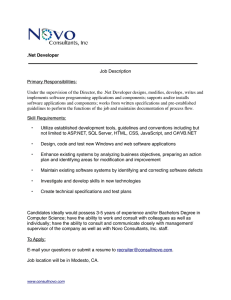


![ProcessCapability[1]](http://s2.studylib.net/store/data/015258277_1-c71a456014ce66e63a53d060e47ccdba-300x300.png)

